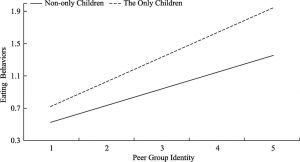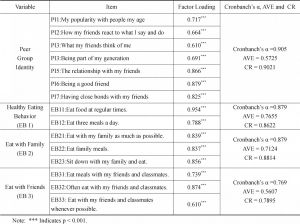论文
and the Effects of Peer Group on Adolescent Eating Behavior-Based on the Perspective of Identity
检索正文关键字
论文目录
- 1 Introduction
-
2 Literature Review
- 2.1 Peer Identity
- 2.2 Adolescent Eating Behavior
- 2.3 The Social Development and Consumption Differences between only Child and Children with Siblings
-
3 Hypothesis
- 3.1 Peer Group Identity and Adolescents’ Eating Behavior
- 3.2 The Moderating Role of Being an Only Child
-
4 Research Methods and Results
- 4.1 Instruments
- 4.2 Sample Description
- 4.3 Reliability and Validity Test
- 4.4 Hypothetical Test
- 4.4.1 The Result of Regression Analysis of Peer Group Identification and Eating Behaviors
- 4.4.2 The Results of Moderation Effect of Being an Only Child
-
5 Conclusions and Implications
- 5.1 Conclusions
- 5.2 Implications
- 5.2.1 Theoretical Implications
- 5.2.2 Managerial Implications
相关文献
A Study of Auditing Quality of Branch Offices in the Auditing Market
The Impact of Gambling Behavior on Dividend Payout Policy: Evidence from Taiwan
The Value Relevance of Earnings and Accruals
Global Diversification and Firms’ Stock Market Performance: Do Situational Factors Matter?
Money Market Effect of Open Market Operations: Evidence from China
The Influence of Enterprise Safety Climate on the Safety Behavior of Migrant Workers
查看更多>>>








